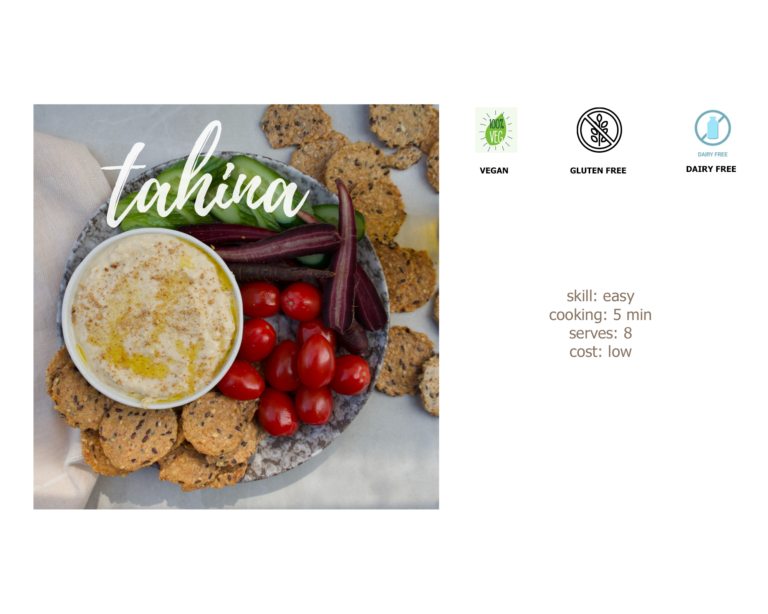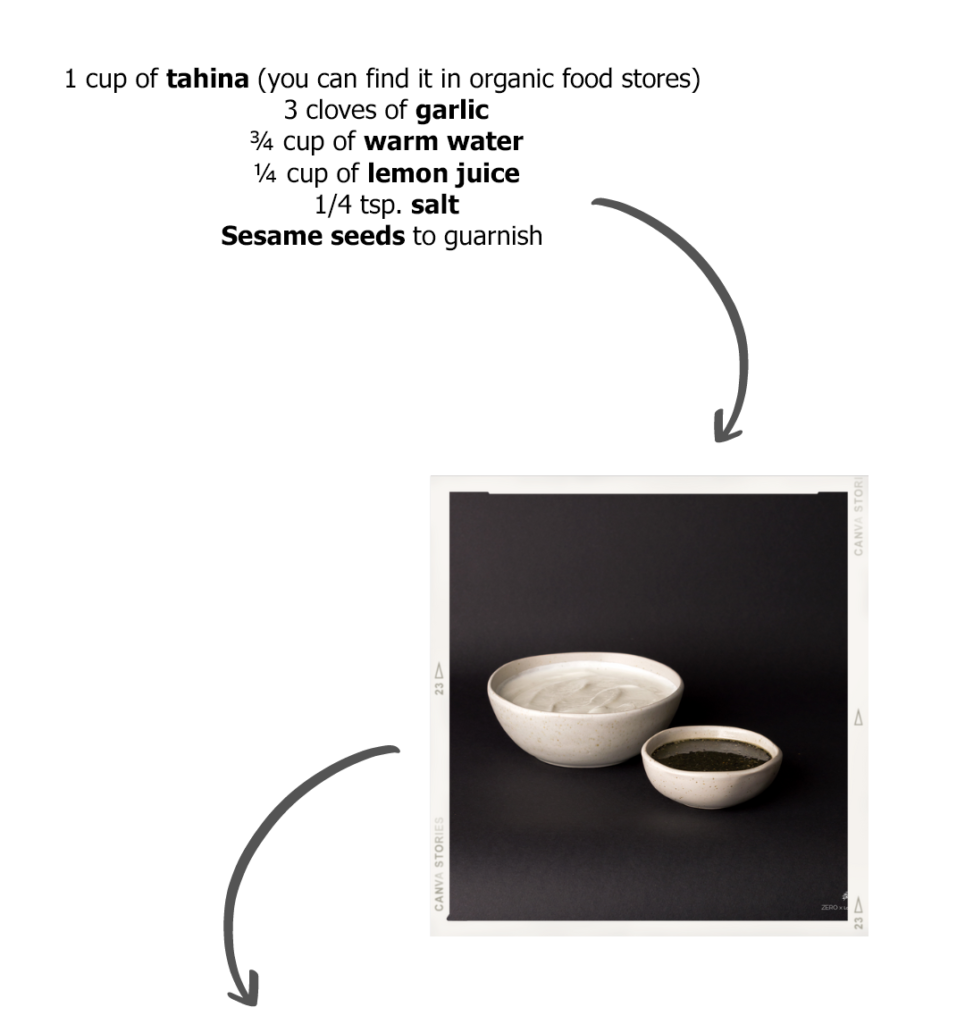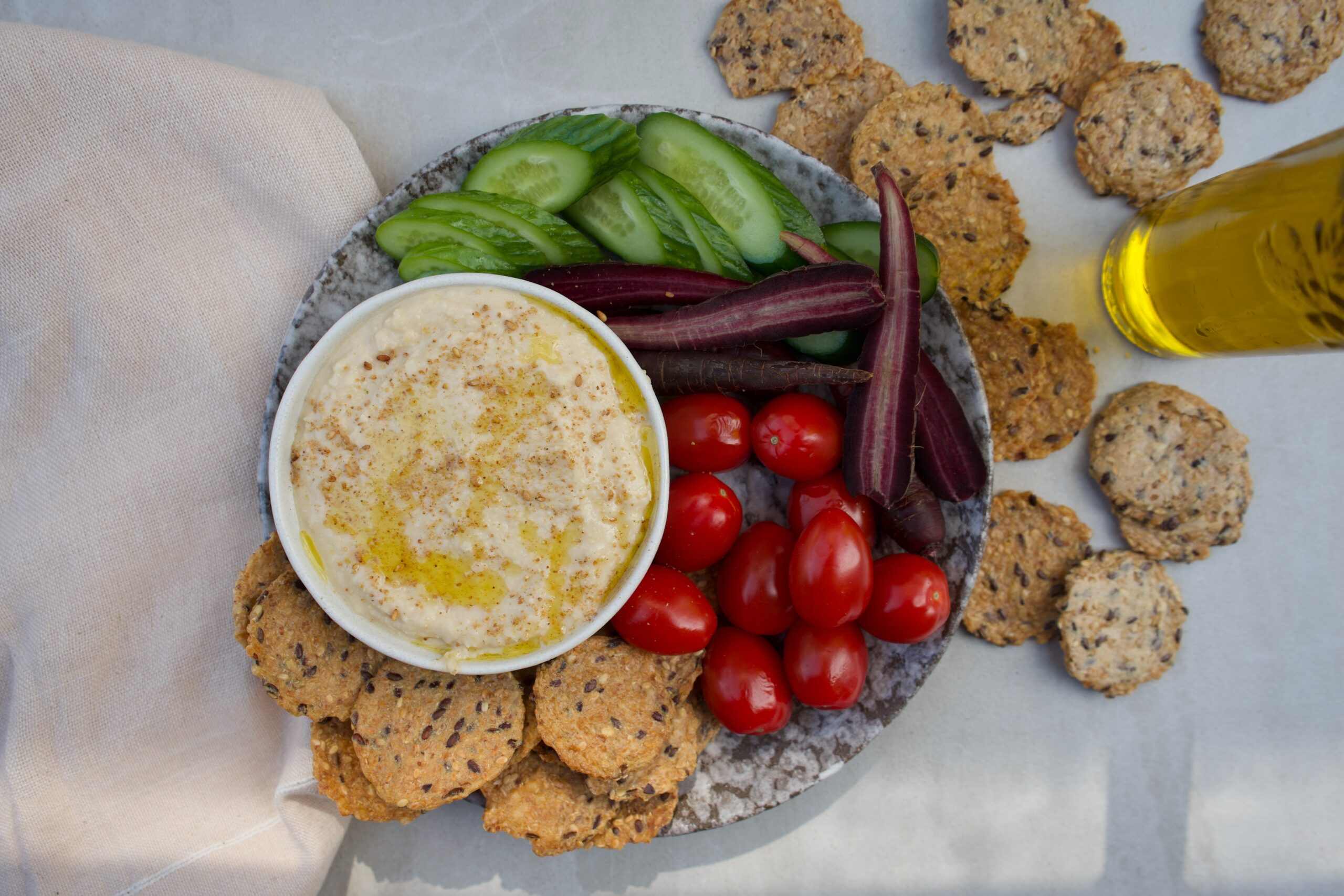History and Curiosity

Tahini is the Arabic name for ground sesame seeds that make sesame paste, similar to peanut butter. This recipe is part of Palestinian and Middle Eastern cuisine, but we also find it in many Asian recipes.
The first references to tahini date back to the 13th century. In ancient Persia, products based on ground sesame seeds, known by the name “ardeh”, were already consumed. Shortly after, sesame paste also arrived on Palestinian tables, although for centuries, only the aristocracy and the rich could obtain the ingredients to prepare tahini.
The ancient Greeks, however, used sesame seeds as medicine and food. It is said that at the time of Hippocrates, sesame seeds were already recommended for their nutritional value.
Nowadays, Middle Eastern restaurants use tahini on its own as a sauce or mix it with other ingredients to make different sauces and dishes.
In Palestine, it is often garnished with garlic and lemon juice. Hummus, for example, is a sauce known to everyone and is made with tahini.
Many other Middle Eastern countries use tahini in various forms: in Turkey, it is mixed with other ingredients to make a hearty breakfast dish called tahini-pekmez. In Iraq, tahini is combined with date syrup to make a wonderful dessert.
With a peanut butter-like texture and sesame flavour, it’s no surprise that tahini is versatile and lends itself to so many recipes!
To make tahini, sesame seeds are carefully roasted in the oven for 6-8 minutes, then ground in a food processor with olive oil until a creamy sesame paste is obtained.
Today, we will present you the authentic Palestinian tahini sauce that you can enjoy with delicious falafel or, as a condiment for a summer salad or directly on a slice of bread. You will love it because it is delicious, super nutritious and simple to prepare!
Ingredients

Instructions
Pour the tahini into a bowl and add warm water, garlic, lemon juice and salt. At this point, blend everything with the help of a food processor or blender until you obtain a creamy, ivory-coloured sauce. If using a blender, you may need to use a long-handled spoon to break up the thick portion of the sauce once every 30 seconds; this will prevent it from clogging the blender blades.
After a few minutes, the sauce will turn into a rich, smooth paste. If the mixture is too thick, slowly add more water until you reach the desired consistency.
We recommend keeping it thicker and creamier if you use tahini sauce to season hummus or a meat dish. In contrast, a more liquid sauce is usually preferred as a condiment for pita or falafel. The best thing is to taste often during preparation and add more lemon juice or salt, according to your taste. Finally, if you want to add a bit of crunchiness, you can garnish the sauce with fresh or toasted sesame seeds.
The tahini sauce will be in an airtight container for up to two weeks in the fridge. Let us know how you decide to combine this tasty sauce!




